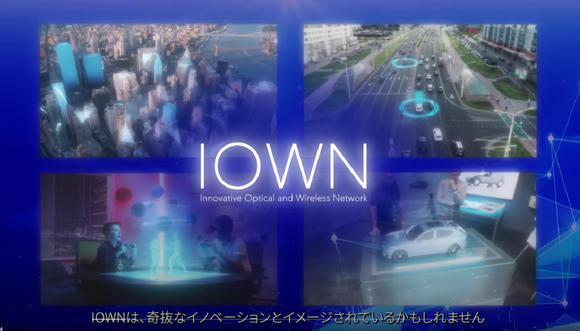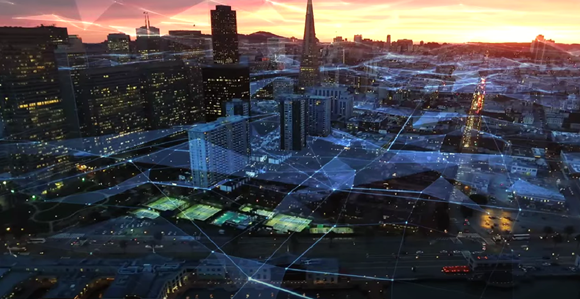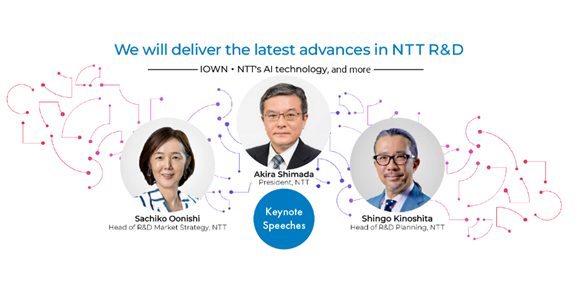What to expect from NTT R&D Forum 2023
Where the international technology conference programme used to stem from Barcelona to Boston and from San Francisco to London to Las Vegas, the global footprint of software engineering development has broadened – and now, it’s not uncommon to see events being staged in Sofia, Jerusalem, Bangalore and Reykjavik.
We can now add Tokyo to that list, because of NTT.
NTT is an international cloud and data networking platform company with an obvious heritage in the telecommunications space – the clue is in the name, Nippon Telegraph & Telephone (NTT).
After this year’s NTT Upgrade event in San Francisco, the Computer Weekly Developer Network team got a better idea of what the company’s technology mission gravitates around. With the Tokyo-located NTT R&D Forum 2023 now following, what exactly can we expect?
Innovative Optical & Wireless Network
NTT likes to extol the virtues of its Innovative Optical & Wireless Network (IOWN) concept.
President and CEO of NTT Akira Shimada focused on this as part of his keynote speech last year and explained some of the key issues that his team sees arising in a data-driven society in which actions are taken on the basis of data generated by a wide variety of devices making up the Internet of Things (IoT).
The IOWN concept is aimed at changing (NTT would say transforming) our existing information and communication technology (ICT) systems and infrastructure with technologies that go beyond the limitations of current ICT technology.
ICT limitations?
Why does NTT say ‘limitations’ so directly?
Because the technology here is not based on telecommunications running over wires, or even via fibre, NTT’s IOWN embraces the concept of an All-Photonics Network (APN), which introduces photonics-based technology to everything from networks to terminals, plus digital twins and what the company calls a cognitive foundation that connects and controls everything.
For those who missed the photonics class at high school, photonics is closely related to quantum electronics and is the branch of optics that involves the application of generation, detection and manipulation of light in the form of photons through emission, transmission, modulation, signal processing, switching, amplification and sensing. Because light has properties of both a wave and a particle, it is an extremely powerful mechanism when harnessed for computing.
According to Photonics.com, “Devices that run on light as opposed to electricity have numerous advantages, the first of which is speed. Light travels at about 10× the speed of electricity, which means that data transmitted through photonic media such as fibre optic cables can travel longer distances in a fraction of the time. Visible light and infrared beams, unlike electric currents, can pass through one another without interacting. As a result, a single optical fibre has the capacity to carry 3 million telephone calls simultaneously.”
At the NTT R&D Forum 2023, speakers will drill into IOWN acceleration and
focus on specific service systems, use cases and elemental technologies of IOWN as well as NTT’s AI technology for generative AI. The latest results of NTT Group R&D will also be presented through lectures and exhibits.
Speaker selection
Speakers at the event will include the aforementioned CEO Shimada, plus Sachiko Oonishi, head of R&D and market strategy for NTT, plus Shingo Kinoshita, head of R&D planning at NTT.
Sessions at the show itself will include tracks devoted to the following themes:
- Generative AI & Large Language Models
- Next-generation computing infrastructures
- Sustainable technology
- Next-generation wireless communication technologies
- APN – All Photonics Network technologies
Other sessions include – How the Technology Innovation Brings “Space within Your Reach” by Yuya Nakamura, President and CEO of Axelspace Corporation. We can also look forward to “How far will humans evolve?” by Hiroyuki Kobayashi, professor at the department of research and development for elderly physical function, at the Juntendo University Graduate School of Medicine. Plus also “Is this the city life of the future!?” by Hiroaki Miyata, professor and chair at the Department of Health Policy Management,
School of Medicine, Keio University.
All Photonics Networks
NTT says that the birth of the All Photonics Network (APN) will feel like switching from trains requiring many transfers to a ‘through’ train i.e. one with no stops. It realises a creative transformation based on ultra-cutting-edge technologies and has come about in answer to the increase in IP traffic accelerating throughout the world.
That IP traffic increase will be 30-fold by 2030 and more than 4,000-fold by 2050. The company says that the time will come when almost nine times the current total power supply will be consumed by global network traffic alone. As a result, NTT wants to position APN as a breakthrough that will change the way software application development engineers and all-related operations staff use data communication technologies.
“NTT’s annual R&D Forum offers an in-depth look at the results of our research efforts, including breakthrough innovations in a wide variety of technology areas, including smart world, AI, environmental solutions and the infrastructure which enables the sustainable evolution of these exciting technical fields.” said Kazuhiro Gomi, president and CEO of NTT Research, Inc. “We’re especially looking forward to sharing what the world can expect to see next in global connectivity.”
Looking ahead – and assuming NTT’s vision is realised into reality in the way it talks about these developments – we will also need to make sure we don’t end up with a disaggregated computing landscape. As such, the company says it is developing computer architectures that makes maximum use of photonics and electronic convergence technology that brings together numerous CPUs, GPUs, FPGAs and other computing resources.
There is much to take on board here and this is not ‘simply’ a company talking about a developer toolset extension, this is beyond and beneath the code and really is a question of technologies developing above even the platform level due to the development of photonics and how it will (pun intended, apologies) illuminate our computing futures.






